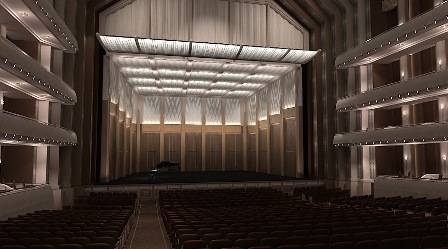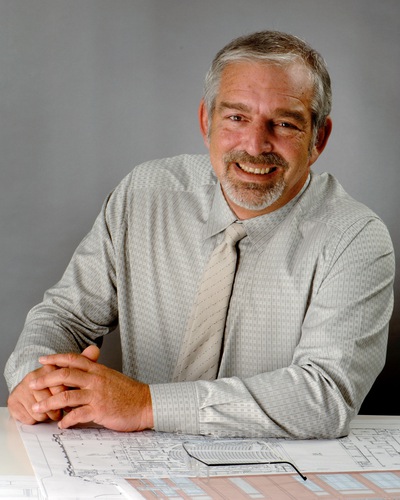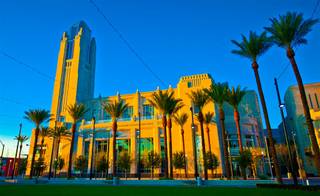
Courtesy
Reynolds Hall at the Smith Center for the Performing Arts.
Saturday, March 10, 2012 | 2 a.m.
Smith Center opens
KSNV coverage of the opening of the Smith Center for the Performing Arts, March 10, 2012.
Look back at the Smith Center's beginnings
KSNV coverage of the opening of the Smith Center for the Performing Arts, March 10, 2012.
Smith Center opening
Sit still enough inside Reynolds Hall at the Smith Center for the Performing Arts, and visitors will notice something strange. It’s quiet. Really quiet.
Tucked near a freeway on the edge of busy downtown Las Vegas, nary a rumble from the nearby train tracks nor a peep from the adjoining lobby can be heard inside the expansive concert hall, which is adorned with art deco flourishes reminiscent of the Hoover Dam. Not even the air-conditioning units, tasked with keeping 695,000 cubic feet of space comfortably cool, make a sound inside the new hall that that will be the home for the local symphony and ballet company, as well as national touring performances.
Silence is critical inside a space like Reynolds Hall, setting an auditory baseline for the dynamic highs and lows of the musical and theatrical performances it will play host to as the heart of the $470 million Smith Center, which will have a star-studded grand opening event Saturday.
Achieving silence inside such a massive space required creative uses of concrete and different approaches to circulating air, but these engineering feats were just part of the monumental task facing architects, acoustical designers and theater planners as they worked to build what they are calling a world-class performing hall.
“There’s a lot of subtlety to the geometry and topography of the room,” said Joshua Dachs, the theater’s planner. “You don’t find buildings like this very often. I think people are going to love coming here.”
Drawing inspiration from classical European opera houses and more traditional concert halls, Reynolds Hall combines the best elements of both to give visitors an immersive experience no matter where they sit, Dachs said.
Utilizing a series of tiered horseshoe balconies, the hall goes vertical to keep attendees close to the action and provide an intimate setting.
“People don’t usually go into rooms this tall,” said David M. Schwarz, the project’s architect. “One of the first things you want to do is look up. When you look up there ought to be something there worth seeing.”
A soaring domed ceiling provides a dash of grandeur to the space, and terrazzo stone floors and the proscenium grille near the stage contribute to the art deco aesthetic. But each of these features also plays a functional part in how sound travels through the space and how it is received by the audience.
Terrazzo stone floors were used instead of carpet, which would have dampened sounds, while the proscenium grille hides a drape used to alter the acoustics of the space depending on whether it’s hosting a symphony or a country music concert. Textured ceiling panels evoke images of sun rays shining down but also play a crucial role in breaking up and distributing sound around the theater.
Designing the acoustics of a performing hall is difficult, Schwarz said, because every surface, from the front of the balconies to the audience and the chairs they’re seated in, has an impact on the overall experience.
Through the use of scale models and computer software, the design team tested countless configurations for the hall, tweaking subtle details until a final design was decided upon.
“One of the key relationships is how much cubic volume of air is in the space versus how much absorptive surface in the form of the audience is there,” said acoustician Paul Scarborough. “You want to get just enough volume to get the resonance, but not so much that you lose the impact of the orchestra.”
Standing on the first tier balcony in the hall on a recent weekday morning, Smith Center President Myron Martin beamed as he looked out over a theater he has worked on for years.
With the final design details set, and the acoustics tuned, all the Smith Center needs now is a crowd.
“As much as I try not to be boastful,” Martin said, “there is no doubt in my mind that the Smith Center will be considered on par with the greatest performing arts venues in the world.”



Join the Discussion:
Check this out for a full explanation of our conversion to the LiveFyre commenting system and instructions on how to sign up for an account.
Full comments policy